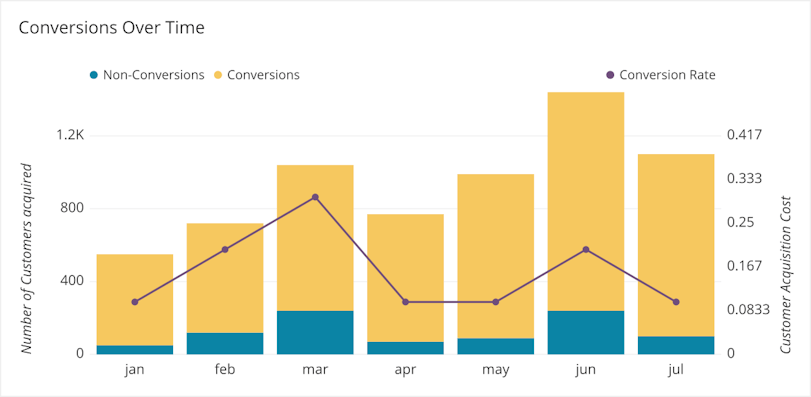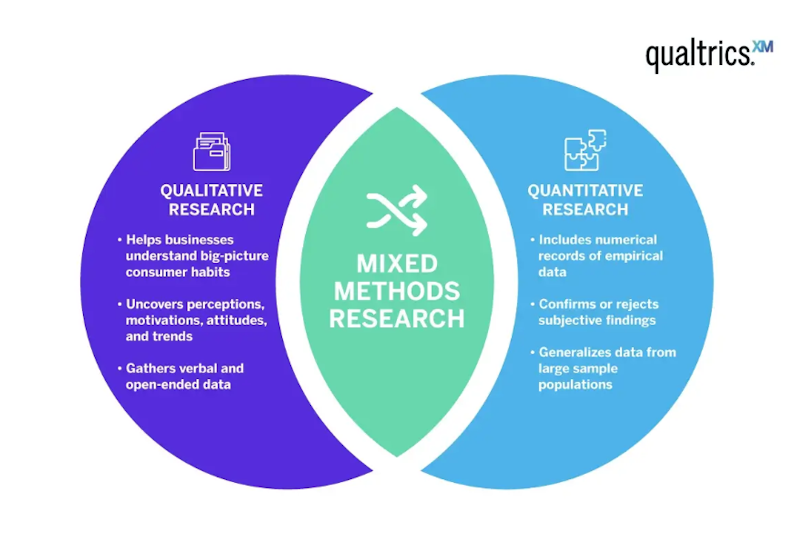Introduction
UX design is powering many successful businesses across industries. Studies show that it can deliver massive gains, potentially returning $100 for every $1 invested. However, demonstrating the tangible impact of UX design on a business's bottom line remains a challenge for many organizations.
Quantifying the return on investment (ROI) of UX design initiatives is important for securing ongoing support and resources. This article provides a comprehensive framework for measuring the success of a UX design agency, exploring key performance indicators (KPIs), data collection methods, and best practices to help agencies and clients assess the value of UX efforts.
Understanding UX Design Success Metrics
Traditionally, UX design success has often been equated with user satisfaction. While this is undoubtedly important, it provides a limited view of the overall impact of UX design. To evaluate a UX design agency and to truly measure success, we must expand the definition beyond subjective feedback. Through a range of UX metrics, UX agencies can demonstrate the value of their work to stakeholders.
Key Performance Indicators (KPIs) for UX Design
We need to establish key performance indicators (KPIs) to accurately measure UX design impact. These metrics provide quantifiable data on user behavior and system performance. By tracking and analyzing UX design KPIs, UX agencies and stakeholders can better understand the impact of UX designs and identify areas for improvement. Below, let's discuss the major UX success KPIs.
Usability Metrics
Usability metrics focus on how efficiently and effectively users can interact with a product or system, they usually come into play during usability testing exercises. Key usability metrics include:
Task success rate: The percentage of users who successfully complete a given task.
Time on task: The average amount of time users spend completing a task.
Error rate: The number of errors users make while interacting with the system.
System Usability Scale (SUS): A standardized questionnaire to measure overall user satisfaction.
User Satisfaction Metrics
Through different user research methods, user satisfaction metrics provide insights into how customers perceive the overall user experience. Key metrics include:
Net Promoter Score (NPS): Measures customer loyalty and predicts business growth by asking customers how likely they are to recommend a product or service.
Customer Satisfaction (CSAT): Evaluates overall customer satisfaction by asking customers to rate their experience on a scale.
User Experience Questionnaire (UEQ): A standardized questionnaire to assess users' perceptions of system usability, usefulness, and pleasure.
Business Impact Metrics
To demonstrate the direct impact of UX design on business performance, it's essential to track business impact metrics. These metrics quantify the financial outcomes of UX improvements in your business:
Conversion rates: Measure the effectiveness of UX design in driving desired actions, such as purchases or sign-ups.
Revenue growth: Assess the contribution of UX design to overall revenue increase.
Customer retention: Evaluate how UX design impacts customer loyalty and reduces churn.
Return on investment (ROI): Calculate the financial return generated by UX design initiatives compared to the investment made.

Developing a Comprehensive Measurement Framework
Now that we know the metrics to track, to effectively measure the design success of a UX agency, a framework that aligns with your overall business objectives is necessary. This framework should provide a structured approach to data collection, analysis, and reporting.
Aligning UX Metrics with Your Business Objectives
A successful UX measurement framework starts by aligning UX metrics with broader business goals. By understanding your company's strategic priorities, the best UX agencies identify the most relevant metrics to pay attention to. This alignment ensures that UX efforts directly contribute to achieving business objectives and demonstrate the value of design to stakeholders.
Creating a Balanced Scorecard
With a balanced scorecard, we can gain a comprehensive view of an organization's performance by combining financial, customer, internal process, and learning/growth perspectives. For UX design agencies, this framework can be adapted to encompass metrics that measure financial impact, user satisfaction, design efficiency, and team development. With these diverse perspectives, businesses gain a deep understanding of their performance.
Setting Clear Goals and Benchmarks
Clear goals and benchmarks help in tracking progress and measuring success. By defining SMART GOALS—specific, measurable, achievable, relevant, and time-bound—teams can focus their efforts and properly assess UX design impact. Also, benchmarks provide a baseline for comparison, allowing UX design agencies to assess performance over time and identify areas for improvement.
Data Collection and Analysis Methods
Effective data collection and analysis help us draw meaningful insights from UX metrics. Employing a combination of quantitative and qualitative methods is crucial. Quantitative data, such as usage statistics and conversion rates, can be collected through analytics tools and website tracking. Qualitative data, including user feedback and behavior observations, can be gathered through surveys, interviews, and usability testing.

Challenges and Best Practices in Evaluating a UX Design Agency Success
Measuring the UX design success of an agency is not without its challenges. It requires careful planning, execution, and interpretation of data. Both businesses and UX agencies have to understand common pitfalls and adopt best practices. This can help in optimizing efforts and achieving more accurate and actionable insights.
Common Pitfalls in UX Measurement
Some of the most common challenges in UX measurement include:
Focusing solely on vanity metrics without considering their impact on your business outcomes.
Relying on a limited set of metrics, neglecting to capture the full picture of user experience.
Data quality issues, such as incomplete or inaccurate data, can compromise the reliability of findings.
Overcoming Data Limitations
Data limitations can hinder the effectiveness of UX measurement. To overcome these challenges, good UX agencies prioritize data quality and completeness. Implementing robust data collection processes, including data cleaning and validation, is essential. Additionally, combining quantitative data with qualitative insights can provide a more comprehensive understanding of user behavior. When faced with missing data, employing imputation techniques or making educated estimations can help fill gaps.
The Importance of Qualitative Feedback
While quantitative data provides valuable insights into user behavior, qualitative feedback offers a deeper understanding of user experiences, motivations, and emotions. User interviews, focus groups, and usability testing help UX agencies uncover hidden pain points, identify opportunities for improvement, and gain valuable insights into user needs and preferences. Thus, qualitative feedback complements quantitative data, providing a richer and more comprehensive picture of user experiences.
Case Studies: Successful UX Measurement Examples
Real-world examples of successful UX measurement can provide valuable insights and inspiration. Companies like Amazon and Netflix have demonstrated the power of data-driven UX design by optimizing user experiences and driving significant business growth. Analyzing user behavior and preferences has helped these companies to personalize recommendations, improve website navigation, and increase customer satisfaction.
How We Skyrocketed Kinteract's Conversion Rates
Adam Fard UX Design Agency has successfully implemented a similar approach for Kinteract, an edtech solution. By conducting in-depth user research and analyzing website analytics, our agency identified key pain points in the app's flow.
Through iterative design and testing, we were able to redesign and optimize the flow, resulting in a 78% increase in conversion rates and overall user satisfaction. This case study highlights our UX design agency's ability to deliver measurable results through data-driven UX design.
See the full case study.
How Our Agency Impacted e-Bot 7
Our agency's influence in this project extended beyond just design deliverables. Through UX education, we promoted a shared understanding of design principles across various teams and stakeholders within the client's company. This alignment, combined with our introduction of agile processes, greatly improved project efficiency. It also led to a more collaborative and positive work environment for the client's team.
See the case study here.
How Different Industries Approach UX Metrics
Different industries have unique challenges and opportunities when it comes to UX design. For example, the healthcare industry focuses on patient safety and satisfaction, while the financial sector emphasizes security and trust. Consequently, UX design success metrics vary across industries. While some metrics, such as user satisfaction and task completion rates, are applicable across sectors, others are industry-specific. Understanding these differences is crucial for tailoring UX measurement strategies to your specific business needs.
Lessons from Real-world Implementations
A whopping 70% of online businesses fail due to bad usability and UX. On the other hand, improving UX can lead to up to a 400% increase in conversion rates for businesses.
Real-world experiences in UX impact measurement offer valuable lessons. Many organizations have learned the importance of continuous improvement and iteration in their measurement strategies.
Additionally, clear communication and collaboration between UX agencies and businesses are crucial for successful implementation. Balancing short-term metrics with long-term goals is another key lesson, as it ensures sustainable success. Finally, understanding the limitations of metrics and combining quantitative data with qualitative insights is essential for a comprehensive evaluation of UX design impact.
Best Practices for UX Agencies in Measuring UX Design Impact
To effectively measure the impact of their work, UX agencies should:
Develop standardized measurement frameworks that can be adapted to different clients.
Collaborate closely with clients to define key performance indicators (KPIs) aligned with business objectives.
Leverage data analytics tools to gather and analyze relevant metrics.
Communicate measurement results clearly and effectively to clients.
Continuously refine measurement strategies based on insights and feedback.
These best practices can help UX agencies differentiate themselves from competitors and establish a strong reputation for delivering measurable value.
Conclusion
Measuring the success of a UX design agency requires a comprehensive approach combining qualitative and quantitative methods. Through clear UX design KPIs, a robust measurement framework, and effective data analysis, businesses can evaluate the impact of UX design on their business outcomes.
What is the future of UX measurement?
The future of UX measurement lies in the integration of advanced technologies, such as artificial intelligence and machine learning, to extract deeper insights from data. As the field continues to evolve, UX agencies that embrace these innovations will be well-positioned to lead the industry.
Partnering with a data-driven UX design agency like Adam Fard can provide the expertise and resources needed to implement a successful strategy. With a focus on data-driven insights and a commitment to delivering measurable results, we help clients achieve their business goals through exceptional user experiences.
FAQs
How can UX design agencies demonstrate their value to clients?
UX design agencies can demonstrate their value by quantifying the impact of their work through key performance indicators (KPIs) like conversion rates, customer satisfaction, and UX design ROI. By aligning UX metrics with business objectives, UX agencies can showcase their contribution to bottom-line results.
What are the key challenges in measuring UX design success?
Common challenges include defining appropriate metrics, collecting and analyzing data accurately, and demonstrating the correlation between UX improvements and business outcomes. Overcoming these challenges requires a combination of qualitative and quantitative research, as well as strong data analysis capabilities.
How can UX agencies integrate user feedback into their measurement strategies?
User feedback is invaluable for understanding user experiences and identifying areas for improvement. With qualitative methods like surveys and usability testing, agencies can complement quantitative data and gain deeper insights into user needs. This information can then be used to refine UX designs and measure their impact.





